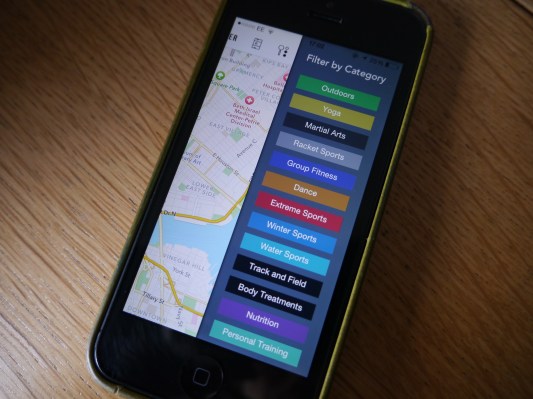SportSetter, a Finnish fitness marketplace startup we covered back in April 2014, has pulled in a $1 million seed round, which it will be using to expand its availability from Finland and New York into the U.K. market, as well as build out its app reach from iOS to Android.
The round was led by North European startup seed investor Reaktor Fund and also includes a variety of funds, angels, and institutions based in the U.S., Singapore, EU and UAE.
SportSetter has been running around the digital fitness block for a while, starting off back in 2013 as a subscription play on the web offering users a “picnic basket” of local activities, as co-founder Niko Karstikko puts it. It’s since pivoted to ditch the subscription model (so it’s not directly competing with the likes of ClassPass) — and to put more emphasis on mobile.
There’s no subscription now, rather SportSetter offers free fitness trials and activity discounts as a way to drum up interest from users — the free trials component being its philosophy to convert fitness testers into paying customers, since it does also sell partner products, such as class bundles and monthly passes.
Simplifying the partner products offered via its app platform is another core component of the business, says Karstikko. So streamlining how people pay for fitness activities — when they’re ready to commit to regular yoga lessons or dance classes or wakeboarding sessions or whatever it is they end up liking after sampling.
“Our typical product would be 10x single pass and let’s say a one month or a three month bundle. And the[re’s] almost always… an exclusivity element to it, such as you don’t pay the surprise fee for the magnet card. You will never ever have to pay anything else but exactly what you see. And pretty much all of our activities are up to 30 per cent off… There’s no joining fee or what have you,” he adds.
At this stage — with the app live in Finland and New York — SportSetter has “tens of thousands” of users, according to Karstikko, who have collectively generated 65,000+ trial visits to fitness activities. And it has more than 300 of fitness provider partners populating its apps with activities — including more than 150 in New York.
Activity recommendations are personalized by asking users what sort of fitness activities they’re into but also — if they sign in with Facebook — widening that out by drawing on any relevant signals culled from their Facebook likes. The team is also planning to build in more algorithmic recommendations too, based on usage of the app, says Karstikko.
He touts a conversion rate of 24 per cent of all trials to returning customers as ‘proof’ of SportSetter’s post-pivot model. And as noted above, paying activities bought via the app are typically cheaper than if bought direct from the fitness provider — giving users an incentive to stay and buy (at which point it takes a cut of any actual sales) — although he is keen to avoid SportSetter being labeled as a Groupon-ish “discount platform”, noting that where it does offer discounts they are not as large as Groupon deals typically are (unless you count all the freebies), with the average discount being just 15 per cent.
“We’re not a discount platform; we don’t want to be a discount platform,” he says, adding that fitness is, in any case, less likely to encourage the kind of “deal-hopping” generated by Groupon, since routine tends to become a core characteristic of engaging in these activities.
Isn’t there a risk of freeloaders just keeping trialling freebie activities and never committing to pay for anything? He labels that “a risk in theory” and claims there hasn’t been “a single abuse case” thus far — adding that more than 70 per cent of users are Facebook connected, and have thus provided the company with their identity.
He concedes that SportSetter does retain an element of “flexibility”, in that it can set “a certain amount of discount” itself — to manage supply and demand on its platform. So its partners have to be happy with that trade-off. What they get in return is another digital marketing and customer acquisition channel — that at least has big ambitions to scale up.
“We really support the partner in terms of their online content, essentially replacing the online marketer aspect of it,” adds Karstikko. “We’re essentially giving exposure to the actual product.”
